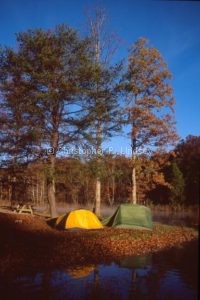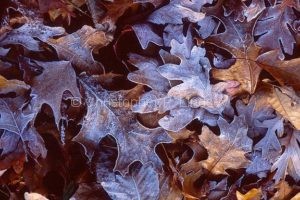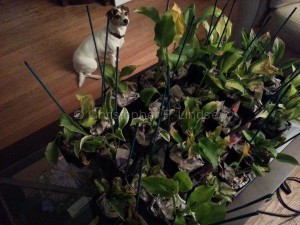“Now hold on a minute,” you may be saying to yourself. “You talked about fall planting last week. What’s so special about transplanting that it gets its own post?”![]()
The answer is a very subtle, but extremely important one: planning.
It seems that every fall I have a list of plants that need to be moved for some reason. They’ve outgrown their space, they’re languishing and underperforming, the dog likes to lay on it, the color clashes with other plants, you have a better (new) plant for that location, etc. That’s one of the great things about a garden — you can change it at any time, for any reason. Once you plant something you’re not stuck with your decision.
It’s that need to notice earlier in the growing season (and remember later) that makes planning such a critical part of the process.
I’ve found that marking plants that need to be moved with a landscape flag like the one to the right works really well for me. I use four colors:
- Pink: This plant needs to be transplanted
- Blue: This plant needs special attention, be it extra water or just monitoring
- Orange: This plant was just planted and needs to be added to my plant database and have a label made
- Lime: This plant has not been planted yet — I stick the flag in the pot and put the pot out in the garden
I’ll explain the flags more in another post, but this should be enough for you to get the idea. If I see a plant that needs to be moved, any time in the season, I literally flag it. Then, when the temperatures are right, I look for the flags in the garden. Sometimes the plant gets moved early, and sometimes it waits until fall.
Generally speaking, perennials require less work to transplant than woody plants. When I know I’ll need to move a small tree or shrub, I always take a spade and root prune around the base of the plant. Stick your shovel in where you think you’ll be digging, push it in all the way, and then remove it. Keep doing this until you’ve gone around the plant completely. Since the plant is staying in the ground it can recover much more easily than if I dug it up right away, and this gives the plant a chance to grow a network of new roots that will be able to support it come fall.
Perennials are much easier to transplant because their root systems are more contained, so they rarely need to be root-pruned except for suckering plants that form colonies.
From here on out you can follow the same directions as those for planting new plants. Enjoy!










